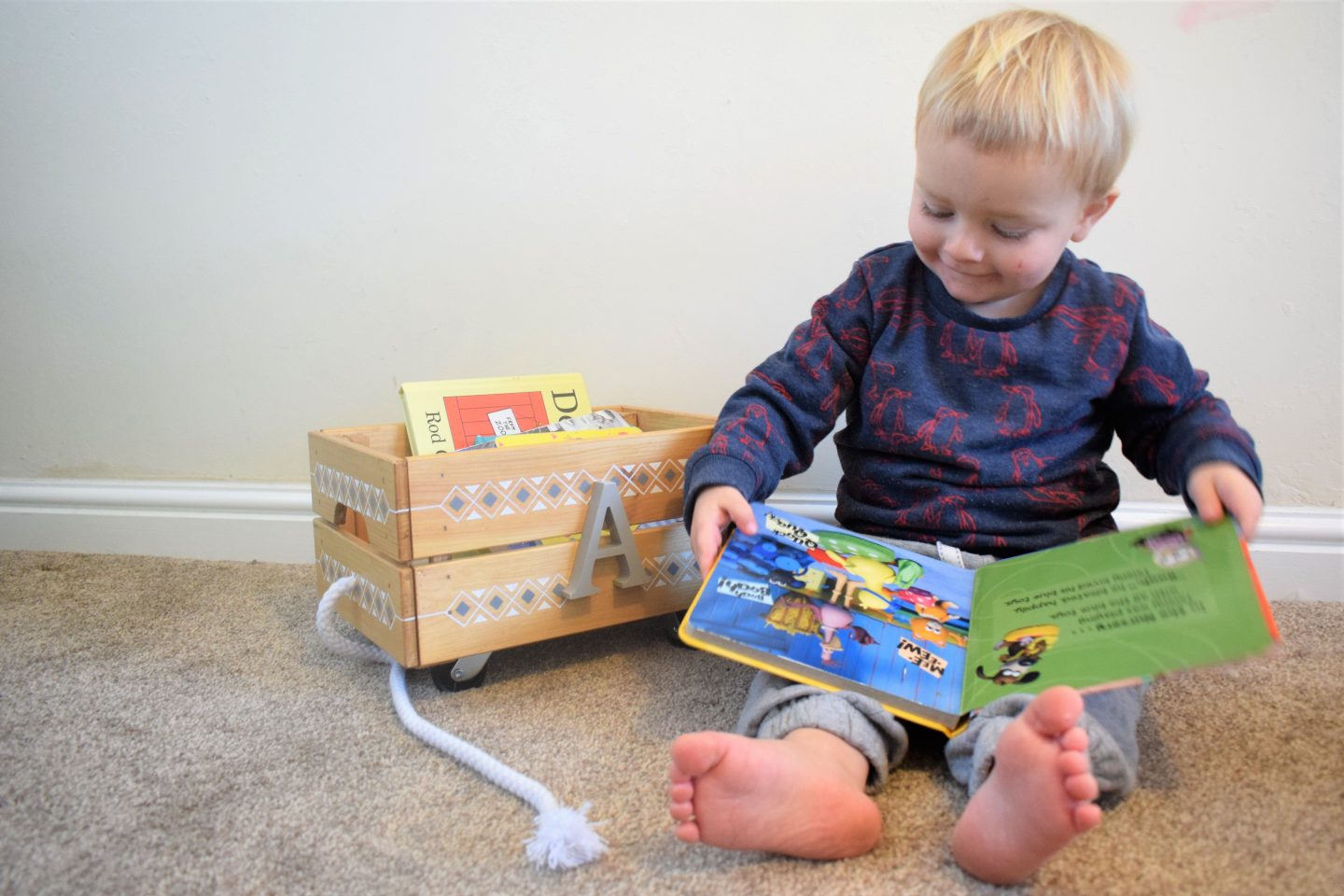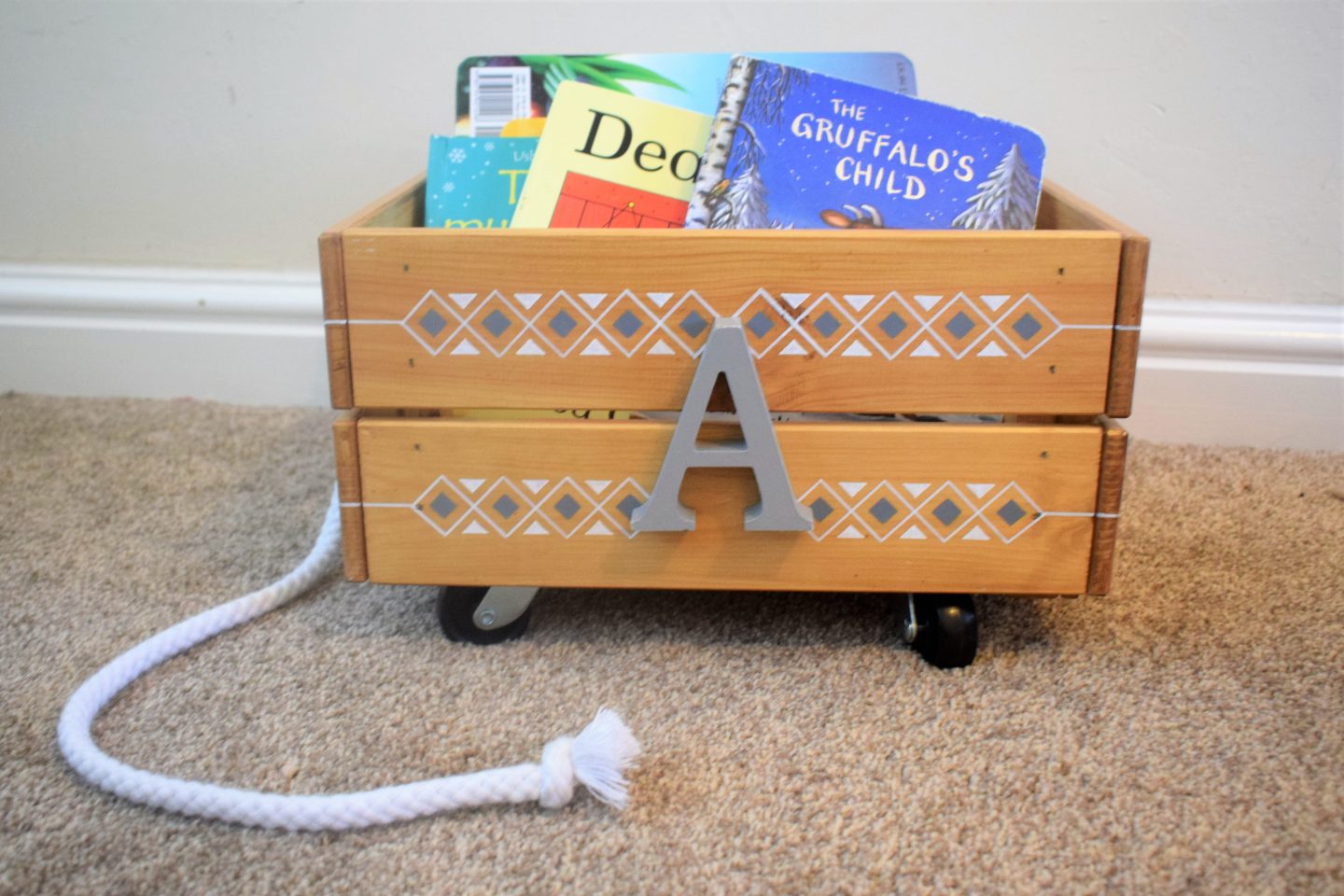
*collaborative post*
Recently my nine year got into reading Harry Potter and my inner bookworm has been glowing with pride ever since. I love reading and I love that all three of my kids enjoy reading too. This isn’t the story for all children though and it can be a real worry for parents when their child has no interest in learning how to read. If you have a reluctant reader on your hands, today’s guest post is a must read. Keep reading for some top tips on how to encourage children to read.
Not all children like to read. This might come as a surprise to those parents who always imagined they would have a house full of readers who wanted nothing more than to come home from school and get lost in a good book or who would complain every night when it came time to turn the lights off.
However, this might not be the reality of your situation. You might find it hard to get your child to sit with a book for any length of time, and they might prefer to play games or watch videos rather than enjoy a story.
This can be disheartening, especially if you are an avid reader yourself. And when you understand how important reading is for a good education because it helps with your child’s critical thinking, their imagination, and their vocabulary, among other things, it can become quite frustrating.
The good news is that as a parent, there are a number of things you can do to encourage your child to read, even if they don’t particularly enjoy it. Read on to find out more.
Start Early
This tip might be too late for those who have realized their children are non-readers at school age, but if you’re new to parenting, then it’s a worthwhile one to think about. The earlier you can start your child reading (or rather, listening to you read at first), the more they will associate books with love and family. Books will have a positive reinforcement attached to them.
Make it your mission to read to your child every night, even if they are newborns. They may not understand the story, but they’ll still get something from your comforting voice and the routine. As they get older, that routine can continue and help them become a lover of books and stories. Eventually, they’ll start to read by themselves to capture the enjoyment of reading.
Create Challenges
Children thrive on challenges and competition, and if you can turn reading into a challenge, they might be more inclined to do more of it. Of course, the ideal situation would be that all this reading would enable the child to develop a love of the written word, but even if this doesn’t happen, reading more is still a good thing.
You can create endless challenges to do with books and reading. You might set a target for the number of pages they can read each day or the number of books they can read in a month. Perhaps you’ll get them to read books with blue covers or books with dogs in them, or books about magic. You might even get them to read a book and then act out their favorite scene. The challenge itself is less important than the fact you are getting them to interact with the stories and read more than they usually would. Don’t forget to offer some kind of prize for completing the challenge, as this will make it seem a lot more worthwhile to reluctant readers.
Let Them Choose
If you buy a lot of books for your child, you might be wasting your money. That’s not because they don’t want to read (although it could be the case), but instead, it could be because you’re not choosing books that interest them and spark their imagination. You’ll know how it feels to find a book you just can’t put down, and you’ll also know how it feels to slog through a book that is dull and boring and that you’re not interested in. If these are the books you keep offering your child, it’s no wonder they’re not interested in reading.
This is why it’s a better idea to let your child choose the book they want to read. You can go to the library, for example, and let them spend as much time as they need looking at the books and trying them out. Or you can find online excerpts of books so you can essentially ‘try before you buy’. Let them read a few pages of a variety of different books until they find one that captures their attention.
It’s also important to remember that reading anything is a positive step forward. You might prefer them to read chapter books, but if they like to read graphic novels or magazines, don’t discourage that. Reading is good, and if these are the types of media that interest your child the most, that’s better than them not reading at all.

Try Alternatives
We mentioned graphic novels above, and these are just one example of the alternatives to books that children might be more inclined to try out. Another great idea if your child is a more reluctant reader is an audio book. Although these won’t necessarily help with learning to spell and becoming a faster reader, the other elements of why reading is so good for you are still there – their imagination can still be sparked (they still only have descriptions to go on, for example, and not actual images), and they’ll still learn new words.
Some parents aren’t so keen on this idea as it doesn’t feel like ‘real’ reading, even though there are certainly benefits and your child may find it is easier for them and much more enjoyable. If you feel like this, it might be worth thinking about whether you can combine reading and audiobooks. In other words, your child might listen to the audiobook but also read along in a physical book at the same time. The benefit of this is that it can help them understand words more quickly and give them more confidence to try out other books.
Another alternative is an eReader. Although this is the same as reading a book in terms of the skills required, using technology might make the idea more palatable to young people who are used to using screens for schoolwork and leisure time.
Along with the eReader idea, you might also want to investigate reading websites for kids. These are sites that are specifically designed to help children read more, and they offer exercises that will have a child reading for fifteen minutes each day before you – or they – even realize it.
Lead By Example
Children like to copy their parents, and in fact, you are their first teacher whether you realize it or not. They will watch you closely, and they will follow what you do. If you tell them to eat their greens, but you never have any on your plate, it’s going to be hard for them to do as they’re told because they won’t understand, and they would rather emulate you. If you tell them to play outside more and not watch TV so much, but you don’t go outside and prefer to watch TV, you can’t be surprised if they would rather not get any fresh air.
The same is true for reading. If you constantly tell your child how important it is that they read, but they never see you with a book in your hand, what will they think? They certainly won’t be encouraged to read. This is why it’s important to set aside time for reading, no matter how busy you might be. Just ten to fifteen minutes in the evening will be enough to help encourage your child to read. Perhaps you can even sit together and read your separate books in the same room. This could be your routine for just after dinner or while a bath is running, for example.
Once your child sees you enjoying a book, they’ll be intrigued and want to find out more. This is the ideal time to help them discover a love of reading that will give them a boost in terms of their schoolwork and education.
Create A Reading Nook
Does your child have a safe, comfortable, cozy place to take their book (or device) and read by themselves? If not, it’s certainly worth considering adding one to your home. It might not be that your child doesn’t like reading, but just that there is nowhere for them to do it in peace. Perhaps there are a lot of people around, or they don’t have a space to call their own and they keep getting interrupted. Maybe they feel they are a slow reader, and they don’t want you to see them turning the pages in case you think it’s taking them too long. Whatever the reason, offering your child a comfortable and private place to read might be what makes the difference.
The great thing about a reading nook is that it doesn’t have to be big. In fact, a small space is often better than a larger one as it will feel cozier. You’ll need something for them to sit on, like a beanbag or soft chair, and it’s a good idea to have a bookshelf in there too with some options for them. A reading light or maybe fairy lights will make it the perfect place. If you don’t have a space that comes immediately to mind, all you have to do is use some boards to turn the corner of a room into a book nook. It won’t cost much, and it’s easy to do. You might even want to use the space yourself when you have some time alone.
